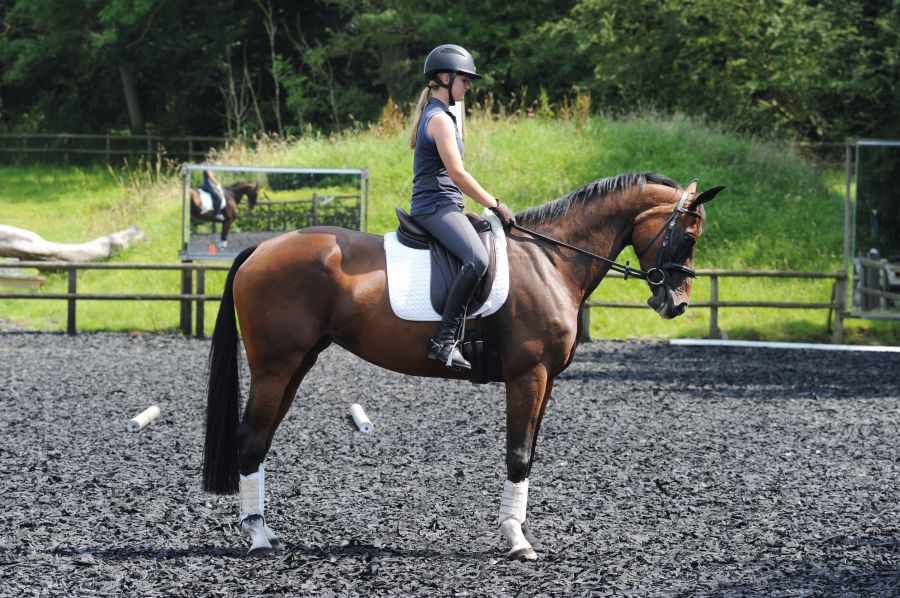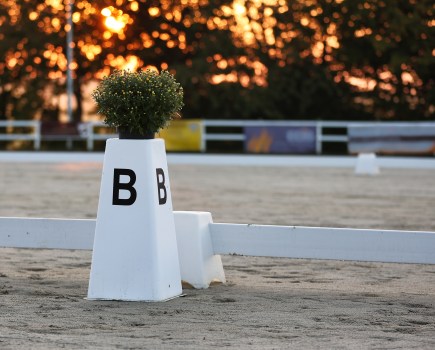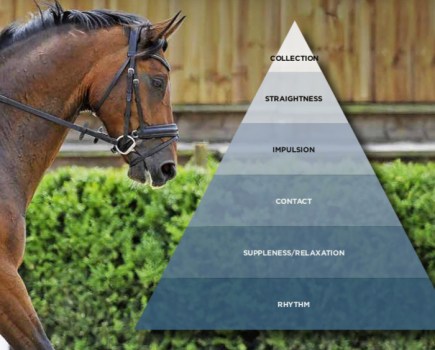The trouble with the centre line is the absence of support from the arena fence and, out in the open, there’s nowhere to hide. Here, it’s more important than ever to give your horse a helping hand.
Dressage pro Georgia Davis shares four things to try at home so that you can nail your halt on the centre line in a dressage test.
What is the ideal halt?
Judges will reward a halt that displays purpose, straightness and submission. This means your horse’s body shouldn’t deviate from the centre line, he should maintain a nice round and soft frame and step actively into the transition with energy. The judge will always want to see you smile, too. If a halt like this seems out of reach for the moment, don’t despair. It’s time to get training to correct any faults — which are far more common than you might realise.
1. Stop him from anticipating the transition
Any time you run through the test, don’t perform the halt. If he still backs off and expects to halt, ask for a more forward trot as you turn on to the centre line, keeping the connection into the hand so he doesn’t rush. If you still need to train the halt, ride down the quarter and three-quarter lines, varying where you ask. You still get to practise halts away from the fence this way, but avoid conditioning him to halt on the centre line.
2. Stop him from leaning
Use your seat. If you fall into the trap of bracing your hand, you’re only giving the horse more to resist. Instead, practise performing the transition progressively with your seat, using your hand as little as possible. Slow your rise to collect the trot. With your core engaged, close your knee and keep your lower leg in a supportive position. Most importantly, your hand must be soft. Over time you’ll teach your horse to slow in response to your seat and, without resistance, he’ll be more confident and accepting of halt transitions.
3. Stop him from drifting
Visualise your horse moving along a railway line — keep his legs on the track and yourself between the rails. If you’re definitely straight, look to your horse — swinging quarters are often the culprit. The solution is shoulder-fore in the same direction as the swing. This encourages him to transfer weight to his inside hind and step underneath himself for support, rather than leaving it free to shimmy out to the right
Shoulder-fore aids
- Ask for slight inside flexion. Turn your body to the same angle you want your horse’s shoulders to mirror (15°).
- Use your inside leg to ask for a subtle bend in your horse’s ribcage and to establish connection in the outside rein.
- With your horse’s shoulders now on a slight inside track, use your outside aids to control the angle and keep his body straight.
4. Stop him from resting a leg
Improving engagement minimises this issue. As you prepare to halt from a good working trot, picture a box surrounding your horse and keep him in there. His nose mustn’t poke forward and out the front, and his quarters shouldn’t escape out the back – he must maintain this purposeful frame throughout and step through with his hindlegs. To do this, keep supporting him with your lower leg and don’t alter your rein contact as you make the transition.
Meet the trainer: Georgia Davis is a dressage rider based in Hampshire who spent her junior years riding for Great Britain all over Europe and at 16 became a working pupil for Gareth and Rebecca Hughes. She has won various national and regional titles, including the 2020 advanced medium title on her own Keystone Diego.
NB Lead image from Your Horse Library. The horse is standing square but the halt could be improved with a softer outline as he looks a little tense in the head and neck









